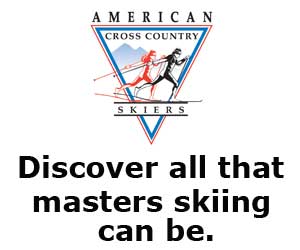
Michigan Skiers at the Masters World Cup 2007, Rovaniemi, Finland
Thu, Mar 29, 2007 - By Randy Bladel
Rovaniemi is a busy city of 32,000 on the Arctic Circle that bills itself as the capital of Finnish Lapland, though it’s more the gateway at the southern reaches of Lapland. As the city was nearly completely burnt to the ground by the retreating Germans after the Finns made peace with the Soviet Union during WWII, the architecture is functional-but-boring modern “50s and newer, with a few exceptions, such as the beautiful suspension bridge of the river Kemijoki, and the wonderful Arctikum museum.
The people were invariably polite, helpful, and friendly. Nearly everyone spoke English, and most signs had some English components to them, a great help to us, at least, as the Finnish language bears no resemblance to the Scandanavian languages, and remained mostly impenetrable to me. Although I was told that Finnish is related to the Slavic languages, it seems to have made off with most of the vowels.
The city lies mostly on one side of the confluence of two rivers, with the Ounasvarra ski areas on the other. Like most European cities, there were well laid out bicycle and walking paths everywhere, well used by cyclists on plain utility bikes in spite of a few inches of packed snow. We even saw some folks skiing on these paths, though the cinders strewn on the snow for traction would give most of us concern for our bases.
J. D. Downing, AXCS and U.S. contingent director, once again made a fine choice of lodging for those choosing the AXCS package. The Sky Ounasvarra Hotel is perched at the top of the small downhill and jumping hills, overlooking the XC ski stadium. It was therefore possible to ski down (or up) one of the downhill slopes to the race start area, probably taken advantage of most often by Steve Smiegel. On the back side of the hill were the cabins, and well groomed ski trails reaching out into the mixed pine and birch forest for who knows how far. Sixty kilometers of the local loops were well lit, not needed during our stay, but necessary during the dark arctic winter days. Wild reindeer roamed the area, and though they kept a safe distance, were not skittish like our whitetails. (Their domesticated relatives made wonderful meals.)
The terrain and forest that far north were not what I expected based on time spent in Alaska, where tundra, taiga, and scrub willow is about all you see. It really resembled the Upper Peninsula. Apparently the warmth delivered to northern Europe by the Gulf Stream makes all the difference.
The competition was nearly all I have come to expect at the Worlds, that is, well run, well controlled, and very tough. At the Worlds a skier has the opportunity to ski three races, plus a relay if asked, at three distances, in my M5 group 10, 30 and 45 kilometer races. One chooses to ski each distance in either Classic or Freestyle, but not both. At the start of each race each skier is placed into a rigid starting grid based on their FIS rating, and start with other skiers in their group and discipline. (No Michigan Cup “always room at the front.”, even for Smiegel.) While there are other races on the course at the same time, you can easily tell who your competition is by the bib numbers.
Our time in Rovaniemi ended with the best World Masters banquet I’ve experienced, including smoked salmon, reindeer, cloudberry mousse, and a curious pine tar liquor that reminded me of my old wooden ski days. Our trip was then extended by a day by an airplane with engine trouble and an impatient SAS captain, that gave us a wonderful and free afternoon and night in Helsinki, and a warm, sunny day in Copenhagen. (My father’s place of origin, Melzar.)
Rovaniemi, kiitos. (Thanks)
Randy Bladel
